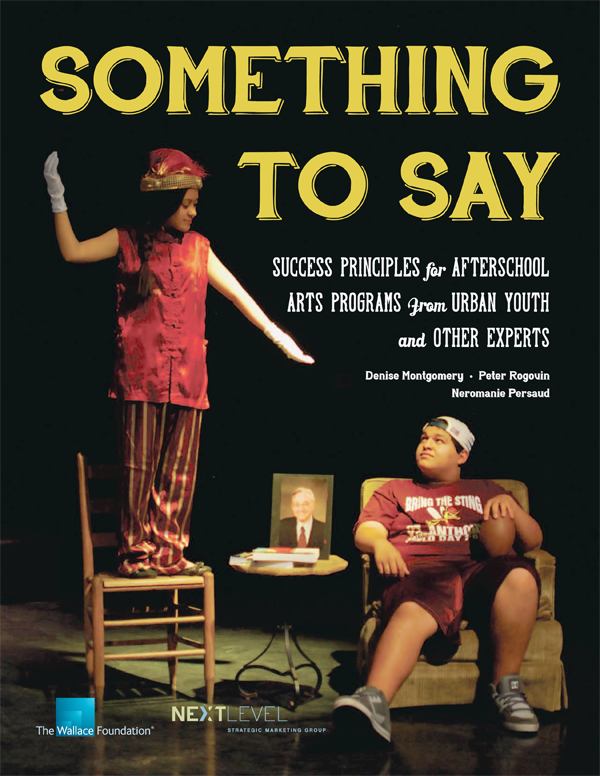Something to Say: Success Principles for Afterschool Arts Programs from Urban Youth and Other Experts
November 2013, 134 pages. The Wallace Foundation, 5 Penn Plaza, 7th Floor, New York, NY 10001, (212) 251-9700, www.wallacefoundation.org.
Download:
![]() Something to Say (23 Mb)
Something to Say (23 Mb)
This report from The Wallace Foundation examines how engagement in the arts can help youth: as a vehicle for self-expression, acquiring skills, and developing focus and teamwork. It posits that with the decline of arts education in public schools, few urban, low-income young people have high-quality, engaging arts experiences at school. Alternatives outside of school, such as private lessons or arts camps, are typically limited to children of families with the resources and savvy to get access to them. What narrow arts experiences low-income youth have are often dull arts and crafts projects where they are instructed to follow a prototype, rather than create something from their own imagination.
Consequently, many urban, low-income youth grow up without even a cursory understanding of what high-quality arts programs are like, or what benefits may accrue from participation. Even when there is awareness or interest in out-of-school time (OST) arts programs, many young people choose other activities for a variety of reasons. Further, community groups often report a steep drop-off in teen OST engagement and participation. That finding points to the importance of captivating young people’s interest prior to the teen years when, as tweens,1 they are more willing to try new OST activities. However, many OST programs are not designing or promoting their arts programs in ways that will be particularly engaging to tweens.
This set of challenges led The Wallace Foundation to ask:
- How can urban, low-income tweens and teens gain equal access to high-quality arts experiences?
- Is there a model of practices that could provide a blueprint for community-based organizations to emulate, so that proven approaches could be deployed in more places, more often?
- Is there a way to approach the analysis of these problems that respects and honors the young people as consumers who make informed choices?
And how do the insights of what tweens and teens want align with what other experts say they need?
Something to Say: Success Principles for Afterschool Arts Programs from Urban Youth and Other Experts endeavors to answer these questions. It primarilly approaches this project by seeing youth as consumers of OST activities, and taking many of our questions directly to them. In its research the authors spoke to young people in their neighborhoods and homes, interviewed researchers and youth development practitioners, visited highly effective programs, and combed the research to address some of the key knowledge gaps in the field of OST arts activities for urban, low-income tweens and teens.

